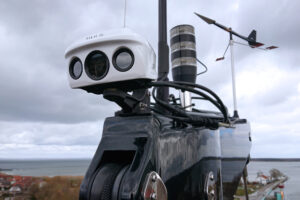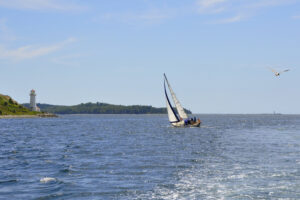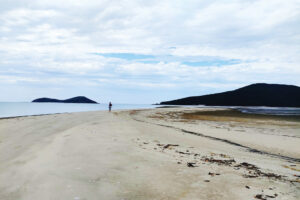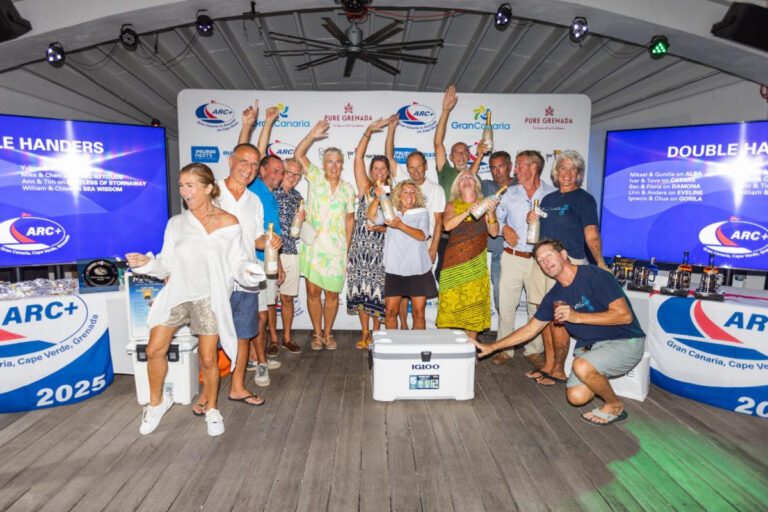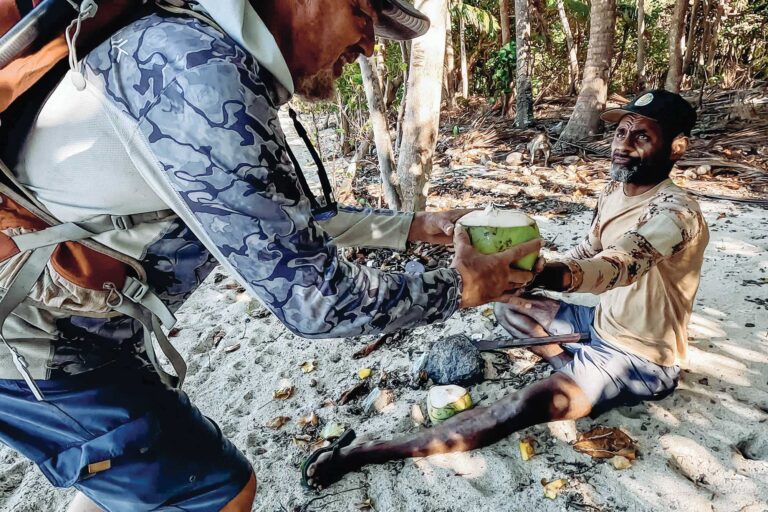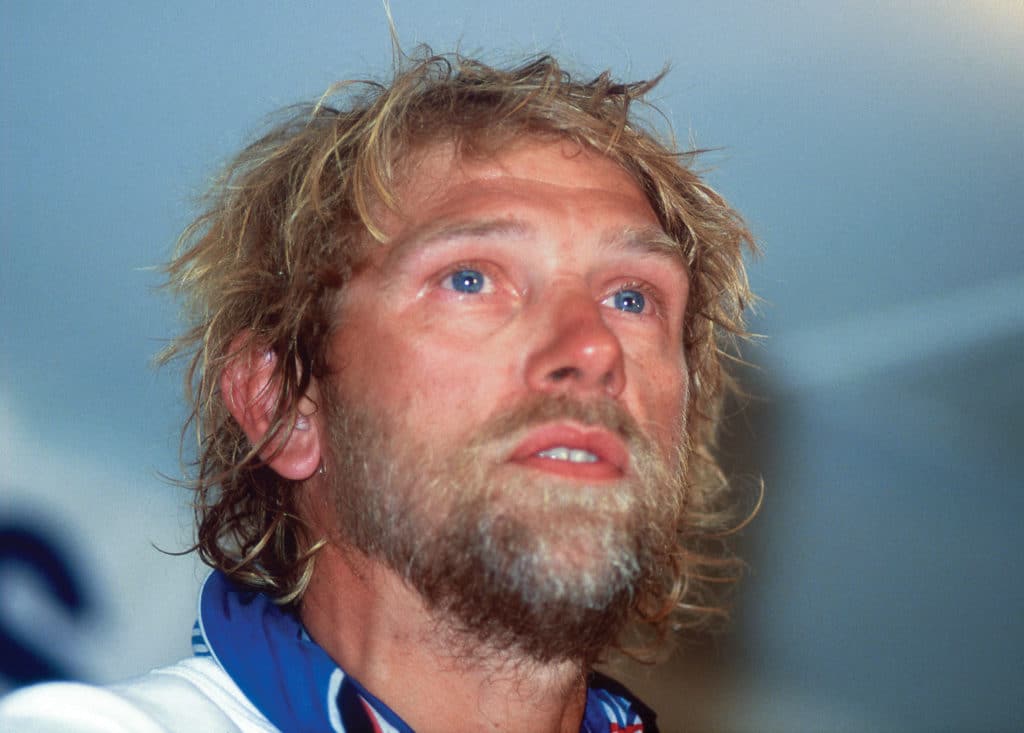
Thursday’s Child: Not only is it a phrase from a popular children’s rhyme, it was also the name of a famous, record-setting race boat. Early last fall, I was reminded of both the poem and the yacht on a sad day indeed, the one when the news broke that Warren Luhrs — the skipper of that same powerful offshore racer, a boat he called T.C. — had died.
Still a year shy of 70, he always looked a good deal younger than his actual age. On multiple levels, his passing was a shock.
Luhrs was a lot of things: an Army veteran, the father of seven kids, an accomplished pilot and an elite long-distance solo sailor. But he’ll probably be best remembered as a boatbuilder. It was the family business.
His dad, Henry, came from a long line of mariners, and after World War II owned a series of boatbuilding companies based in New Jersey. Henry’s two boys, John and Warren, grew up in those Jersey boatyards, and in 1969 the brothers followed their father’s calling and purchased a powerboat company called Silverton. Four years later, primarily due to Warren’s growing prowess in sailing, they launched a sailboat concern called Hunter Marine; the name was inspired by the constellation Orion, also known as “the Hunter.” Eventually the siblings would own four companies, three of which built powerboats, which were largely John’s domain.
But Warren was the sailor. And Hunter, based in Florida, was his deal.
Partly to fan his personal flames of competitiveness and curiosity, but also to sharpen his professional understanding of engineering and naval architecture, Luhrs began ocean racing on some of the sport’s grandest stages. Aboard his 60-footer Thursday’s Child, he won his class in the 1984 Observer Single-Handed Transatlantic Race (OSTAR), establishing a new monohull record of 16 days, 22 hours in the process. Two years later, he entered the boat in the BOC Challenge solo round-the-world race, but was forced to retire after a dismasting off Australia. He made up for that disappointment in 1989 when, with two crewmen, he and T.C. shattered the 135-year-old New York to San Francisco clipper-ship record by nine days after a passage of 80 days, 18 hours.
The photo above shows Luhrs shortly after stepping ashore in California: scruffy and a little dazed by the unaccustomed spotlight, with a faraway gaze in his deep blue eyes, as if he’s seeking something deeper. It’s such an apt portrait in so many ways.
As a fledgling yachting writer, I first met Luhrs just prior to the start of that 1984 OSTAR. I’m tall but he was a lot taller, and he came and went from the race village on a big motorcycle, wrapped in flowing scarves. Yes, he was distant, which made him seem even cooler, if that was remotely possible. And his performance in the race that followed was astounding. That year, French superstars Philippe Poupon, Marc Pajot, Eric Tabarly and Bruno Peyron — all sailing huge catamarans and trimarans — finished ahead of Luhrs, but only by a few hours. No monohull sailor, before or since, ever competed against the big Franco multihulls as skillfully or heroically as Luhrs.
Many years later, I delivered another, different monohull, Hunter’s Child, with Luhrs from Florida to New England; we shared the same watch for over a week. Frankly, I was as intimidated by the guy as ever, but I grew very fond of his company. Luhrs, at least with me, was quiet and introspective, and didn’t speak unless he had something meaningful to say, or an idea he wished to explore. And, of course, he was an incredible sailor. It was a trip I’ll always be grateful for, especially because, at the time of his death, Hunter Marine was no longer his. So those were happier days.
Shortly after his death, someone sent me a journal entry Luhrs had written after one of his solo adventures, once he was back ashore: “I find myself in a social gathering, yet I feel strangely removed. The things that appear important to these people seem so foreign to me now — peer acceptance, proper dress, underarm deodorant. … Are these values worthy of us? Are we really advancing, and towards what? I drift back to standing on the foredeck, in 60 knots of wind, 1,000 miles from anywhere, feeling the fury of the elements. … I yearn to be there again.”
Like Thursday’s child, Warren Luhrs sailed well and far. Now, incredibly, he’s gone.


